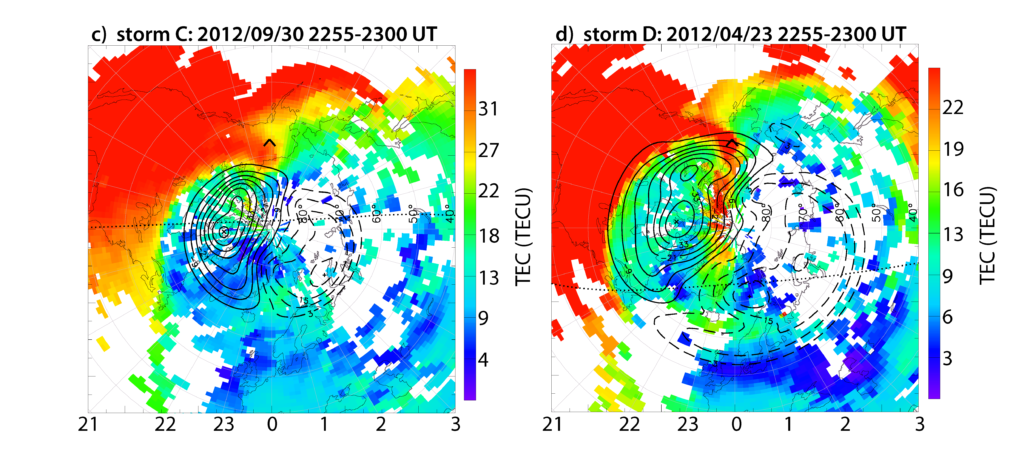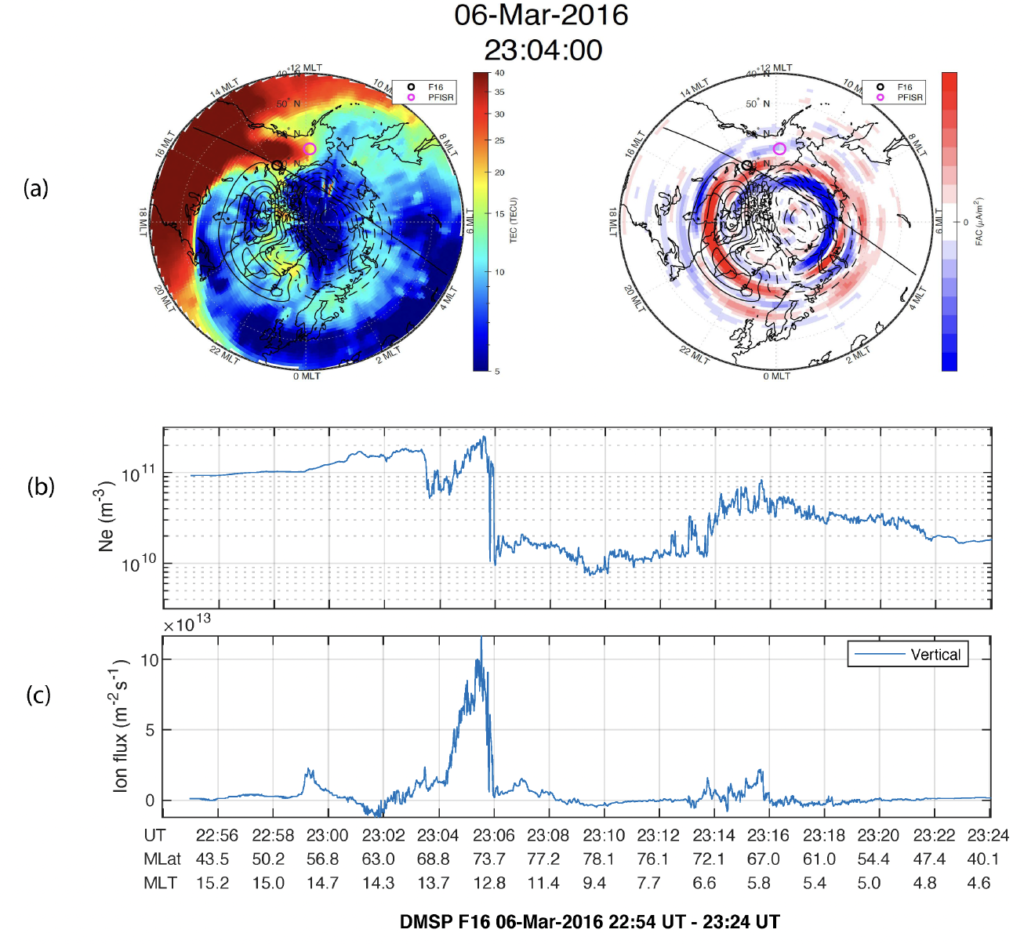The impact of solar wind disturbances on geospace is of particular importance during geomagnetic storms. During a geomagnetic storm, a ridge of electron density enhancement, called storm-enhanced density (SED), often occurs in the mid-latitude and subauroral region. These high-density structures can be transported into the polar cap and constitute a source for the enhanced F-region plasma observed in the polar region and the nightside aurora zone. We investigate the relative importance of transport due to convection flows, local imbalance between production and loss due to uplifting, and enhanced local production due to precipitating energetic particles, in creating such prominent density structures using both observations and numerical modeling, i.e., the Global Ionosphere and Thermosphere Model (GITM) [Zou et al., 2013, 2014, Zou and Ridley, 2016, Wang et al., 2019, Ren et al., 2020].
Evolution of these ionospheric density structures strongly affect the ion upflow fluxes [Zou et al., 2017; Zou et al., 2021]. Therefore, the dynamic processes in the coupled IT system and the resulting state of the ionospheric storm are crucial for understanding the temporal and spatial variations of ion upflow fluxes and thus should be incorporated into coupled geospace models for improving our holistic understanding of the role of ionospheric plasma in the geospace system.
Recent advances and unanswered questions regarding the polar cap ionospheric density structures can be found in our recent review paper [Zou et al., 2021b]. Impact of polar cap patches on GNSS satellite signal scintillation has also been explored recently by [Cardenas-O’Toole et al., 2024]


